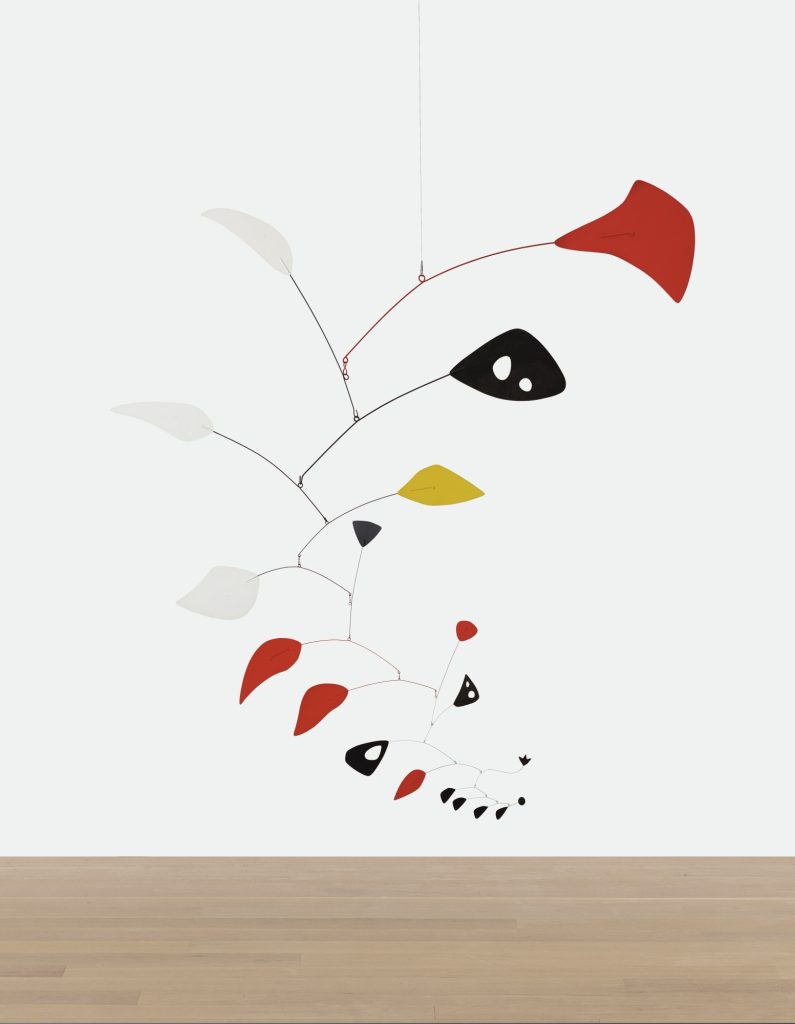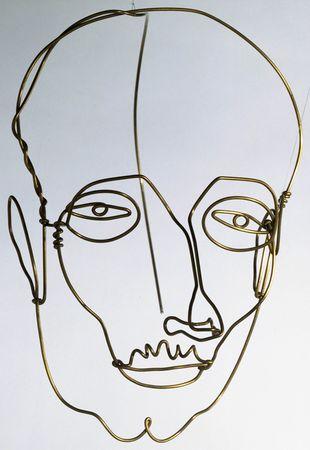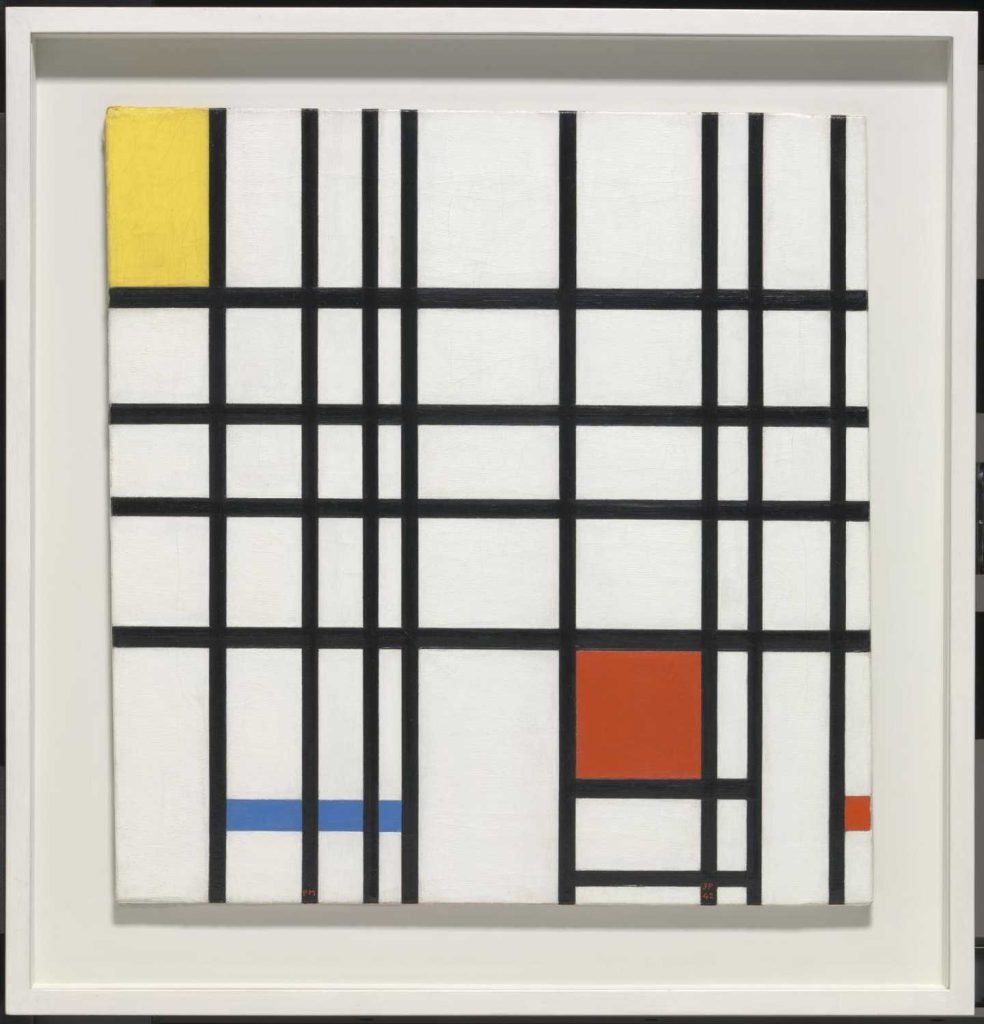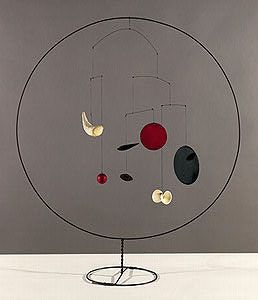“When everything goes right a mobile is a piece of poetry that dances with the joy of life and surprise!”
– Alex Calder

Image 1 – ‘Mariposa’ is one of Calder’s most famous 3D structures, It is made of sheet metal, rod & paint and created in 1951 
Image 2 – ‘Portrait of a Man’, 1929 is a wired sculpture created during the period of wire sculptures & the circus 1926-1930.
This animation will be in the style & the inspiration of Alex Calder. Alex Calder was an American artist and was known for his wire sculptures and the mobile, a type of kinetic art which relied on a careful weighting to achieve balance in the air. In his early life Alex began by training as a medical engineer and then began to pursue painting after receiving his degree. He had always occupied the roles over the decades as an artist, sculptor & inventor. His career included the creation of massive sculptures During the early 30s Alex’s view of art has changed when he visited to Piet Mondrian studio, it is where he saw a variety of different coloured shapes and rectangles & the early modernism, this is where he saw his simple paintings of rectangles in red, yellow & black. He describes it as being:
It was a very exciting room. Light came in from the left and from the right, and on the solid wall between the windows there were experimental stunts with colored rectangles of cardboard tacked on ….
I suggested to Mondrian that perhaps it would be fun to make these rectangles oscillate. And he, with a very serious countenance, said: ‘No, it is not necessary, my painting is already very fast.’…
This one visit gave me a shock that started things. (‘Calder’, Thames and Hudson, Ugo Mulas, H.H. Arnason)

Image 3 – Piet Mondrian ‘Composition with Yellow, Blue and Red’ 1937-42 
Figure 4 – Alex Calder the Circle, made 1934 with sheet metal, wood, ceramic, string & paint.
His response was to do what Mondrian refused to; make abstract art move. After leaving the studio Calder wanted to take these shapes and bring these forms to life. This can be seen in an example on one of his most famous art pieces ‘Mariposa’ (Figure 1) . Taking its title for the Spanish word butterfly you can see that the design itself is abstract but you can see how they represent the wings of a butterfly, taking off. This was created in an era of Calder’s life where he started creating larger, outdoor commissions. This piece represents the vastest of Calder’s ambitions as an artist on a broader scale. Mariposa brilliantly captures the form, motion & colour whilst hovering over the viewer.
For this module I am going to create a metamorphosis. A metamorphosis is a change of physical form by mostly super natural means. A caterpillar turning into a butterfly is an example of metamorphosis. It is the complete transformation of character. I will be heavily influencing my design on Calder’s kinetic sculptures. I am going to be evolving one idea to another as my animation is going to undergo a rapid change of appearance during the 30 seconds of animation.
Refernces:
MutralArt. “Mariposa,” Https://Www.mutualart.com/, 8 Dec. 2020, www.mutualart.com/Artwork/Mariposa/4BB5A28E68652B3B. Accessed 29 May 2023.
esearchandmemory.blogspot. “Alexander Calder – Wire Sculptures,” Https://Researchandmemory.blogspot.com/, 29 Nov. 2009, researchandmemory.blogspot.com/2009/11/alexander-calder-wire-sculptures.html. Accessed 29 May 2023.
Sotheby’s (2020). Alexander Calder: The Artist as Inventor. [online] www.youtube.com. Available at: https://www.youtube.com/watch?v=FUchd9wwBoI [Accessed 29 May 2023].
Tate (2015). Who is Alexander Calder? | Tate. [online] Tate. Available at: https://www.tate.org.uk/art/artists/alexander-calder-848/who-is-alexander-calder [Accessed 29 May 2023].
Pinterest. “Alexander Calder, Mobile Sculpture, Mobile Art.” Pinterest, www.pinterest.co.uk/pin/200480620884729614/. Accessed 29 May 2023.
